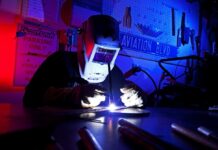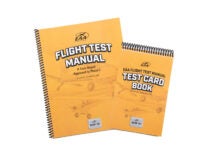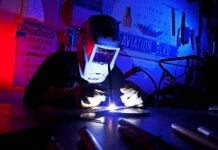 EAA applauds bipartisan legislation that supports EAA/AOPA efforts
EAA applauds bipartisan legislation that supports EAA/AOPA efforts
Bipartisan “Pilot’s Bill of Rights II” legislation has been introduced in both the U.S. Senate and House of Representatives that would put EAA-supported aeromedical reform into effect along with a number of other protections for pilots and other airmen.
The Senate bill (S. 571) is co-sponsored by Sen. James Inhofe (R-OK), Sen. John Boozman (R-AR), Sen. Joe Manchin (D-WV), Sen. Bob Casey (D-PA), Sen. Steven Daines (R-MT), Sen. Roger Wicker (R-MS), Sen. Heidi Heitkamp (D-ND), Sen. Jerry Moran (R-KS), Sen. John Barrasso (R-WY), Sen. Jon Tester (D-MT), Sen. Pat Roberts (R-KS), Sen. Angus King (I-ME), and Sen. Jeanne Shaheen (D-NH).
Parallel legislation in the House (H.R. 1062) is co-sponsored by Rep. Sam Graves (R-MO), Rep. Dan Lipinski (D-IL), Rep. Todd Rokita (R-IN), and Rep. Collin Peterson (D-MN). The bill is an expansion of the original Pilot’s Bill of Rights that was passed by Congress in 2012 and signed by President Obama, as well as an effort to further advance the aeromedical reforms first proposed in the General Aviation Pilot Protection Act of 2014 introduced by Sen. Boozman and Rep. Rokita.
The first provision of the new legislation is expansion of the Federal Aviation Administration’s current exemption from third-class medical requirements for sport pilots to cover general aviation aircraft up to 6,000 pounds, carrying up to five passengers, for both VFR and IFR flights at up to 14,000 feet. The bill would also prohibit FAA enforcement for third-class medical certificate violations unless the FAA has issued regulations within 180 days of the enactment of this legislation.
“We applaud Congress stepping forward in a bipartisan manner to move long-awaited aeromedical reform forward as part of the second Pilot’s Bill of Rights,” said Jack J. Pelton, EAA chairman of the board. “EAA played a large role in crafting this legislation in collaboration with Sen. Inhofe and his staff. We strongly encourage our members to contact their lawmakers through EAA’s Rally Congress website and in person urging them to co-sponsor and support these bills. At the same time, EAA continues to push the Department of Transportation and Office of Management and Budget to approve the long-overdue aeromedical rulemaking package for public comment. EAA and AOPA together introduced the concepts of aeromedical reform nearly three years ago, so it’s time to get this done via the legislative or regulatory route.”
Among the other sections in The Pilot’s Bill of Rights II:
· Expansion of the original Pilot’s Bill of Rights – This includes expansion of due process protections to include all certificates issued by the FAA (not just pilots); increases protections for certificate holders during an FAA investigation; requires the FAA to release a copy of enforcement investigative reports when serving an enforcement action; and reforms FAA record-keeping policy, among others.
· Limits re-examination of covered certificate holders, with an appeal process to a U.S. District Court.
· Also included are provisions that expedite updates to the NOTAM program, apply the Freedom of Information Act to contract tower communications, extension of civil liability protection to aviation medical examiners, designated pilot examiners and all other FAA designees, encourage flexibility for resolution of FAA enforcement cases, and provide liability protection for volunteer pilots.
“These are all common-sense provisions that allow pilots and other certificate holders to be treated with the due process expected by any American, while also giving pilots more access to the necessary information they need to protect themselves from violating the regulations already in place,” Pelton said. “We are particularly pleased to see Congress acknowledging the crucial role that designees play in the aviation safety system who conduct what had previously been federal governmental activities. These designees need and deserve the liability protection afforded to government employees performing these same functions such as check rides, certificate issuances, and engineering and airworthiness approvals.”













